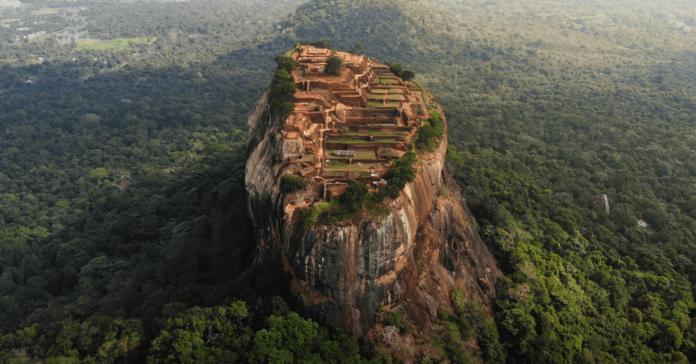According to the Culavamsa, an ancient Sri Lankan chronicle written by the monarchs of Sri Lanka from the 4th century to 1815, Sigiriya was a forest area that after storms and landslides became a hill.
Also called Lion Rock, the site was selected by King Kashyapa (477 – 495 AD) for his new capital and to provide a secure location for himself to rule. After being overthrown, Sigiriya became home to a Buddhist Monastery that remained until the 14th century.
The palace was built on top of a high rock, at an elevation of 349mt, which dominates the area and it was decorated with colorful frescoes. Many of them can still be admired by visiting the remains.

When entering the archeological site, you will be met by the remnants of ancient gardens, some of which are still well-preserved. The Water Gardens, are naturally filled with water during heavy rainfall, and the fountains are impressively still active after over 1500 years.

The last entrance before the final stairs to reach the palace was guarded by a gatehouse built in the form of a crouching “sphinx-like” lion, from which the name Sigiriya originated (literally translated “The Lion Rock”). While most of it collapsed long ago, the paws are still intact.

The views from the top of Sigiriya are extraordinary and give visitors a 360-degree view of Sri Lanka’s lush landscapes and the magnificent gardens below.
Sigiriya is a UNESCO World Heritage site and one of the most visited historical sites in Sri Lanka, just three hours drive away from Colombo.



